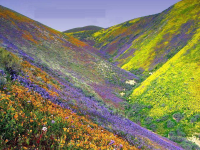
Kurds are fortunate to have some of the most visible aspects of their popular culture authenticated to remote antiquity. Some sections of well-known pieces of ancient literature read like compendiums to a lost encyclopaedia of the Kurdish ethnic character and culture, as soon as one has identified the site of the events and the characters involved. The most interesting evidence of the unusual antiquity of the Kurdish popular culture is in fact the oldest. Digging for the paleolithic remains at the Shanidar Caves of central Kurdistan, the archaeologist R. Solecki complains throughout the first few chapters of his excavation report book, Shanidar: The First Flower People (1971), of the preoccupation of his local Kurdish manual workers with wild flowers. He watches in exasperation while the Kurds continue attaching flower bouquets to their axes and picks, the water trucks, caves’ walls, and of course to their already riotously colored costumes. He fascinates his readers when he reports laboratory results showing that a 56,000-year-old Neanderthal man, uncovered from the cave by his flower-bedecked Kurdish workers, was buried in a bed of flowers of many kinds. Old habits die hard.


